Vinyl Flooring - Your Guide
Share
Copy Link
Vinyl Flooring has seen a surge in popularity over the past decade. With quality vinyl flooring available at reasonable prices, it's such a good option for so many areas of the home, including the hallway, kitchen and bathroom.
Much of its popularity is because it's hard-wearing but you can still achieve the look of wood or tiles, making it a great option for busy family homes.
There's also a huge range of finishes, with some wonderful patterns and designs to choose from.
We take a look at all you need to know about vinyl flooring and also share some inspiring ideas for around your home.
If you are thinking about a renovation in the near future and need some help with where to start with your project, try our 1:1 impartial online session.
Online Session

Beautiful kitchen with vinyl flooring from the home of Insta account @love.brings.you.home. Flooring by Amtico.
Why Is Vinyl Flooring So Popular?
Often renovators want the look of wood, natural stone or a patterned tile but find the natural material can have drawbacks. Vinyl flooring has many benefits which make it a great alternative to traditional types of flooring.
It's softer to walk on, particularly when compared with tiles, which makes it appealing if you have a young family and worry about them falling and landing on a hard tile. Vinyl flooring is normally slip resistant too.
Vinyl flooring is naturally warmer underfoot than a tile, so it feels far better to walk on in the cold winter months if you don't have underfloor heating.

Victorian replica vinyl hallway tiles from Insta account @yorkshire_1829_renovation. Vinyl tiles by Amtico.
Wood or engineered wood are such beautiful options however many find them impractical for a family as they are prone to scratching. Vinyl flooring is known for being scratch resistant and if you do damage it, vinyl tiles can be replaced individually.
Most vinyl flooring is also water resistant, which makes it a popular choice in both the kitchen and in the bathroom. It's also easy to clean, so it's a low maintenance option.
It also can be one of the more cost effective options, compared to wood or tiles. However, some of the Luxury Vinyl Tiles (LVT) which are high quality and hard-wearing can be as expensive as the alternatives.
As with any product, the robustness of the floor will be down to the quality you buy - you can get cheap vinyl which won't be hard-wearing. A good quality LVT should have a lifetime guarantee.
What Is The Difference Between A Standard Vinyl Flooring or LVT Flooring?
Where standard vinyl flooring is made up of a thin layer of vinyl with a printed pattern and then a layer of protection, LVT tends to be far more rigid and robust. Standard vinyl is softer so will be more susceptible to scratches and dents than an LVT.
LVT is typically made up of around 5-7 layers which includes layers of PVC backing, a photographic layer, a clear layer and a protective layer. It can also include a foam backing to add extra softness and sound reduction.
Standard vinyl comes in either the traditional sheet format or a self adhesive tile. LVT is commonly laid with a click mechanism but also self adhesive planks or tiles as well as a loose lay are available. The format that you choose can be determined by the manufacturer, some only sell glued down vinyl, and by the space where you want to lay the vinyl flooring.
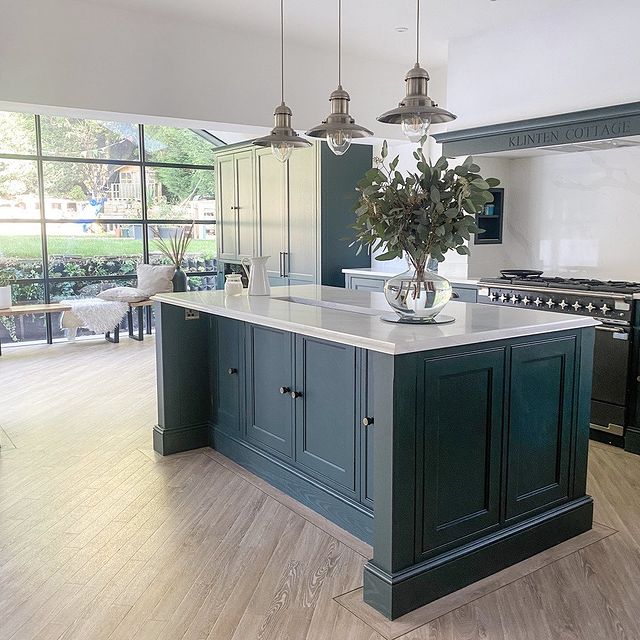
Striking vinyl flooring in the kitchen from Insta account houseofhaz. Flooring by Polyflor.
Sheet Vinyl Flooring
Sheet vinyl is one of the cheapest flooring options around. The large sheet format is the original style of vinyl flooring, where you cut it to the size of your room and it's easy to fit with no joins. It's therefore cheaper to lay than individual tiles, particularly if you are looking for a more complicated design such as a herringbone lay.
This is a common laying method for standard vinyl and works well in a small area where you want to give the space a quick refresh. This is also a good option for a DIY installation.
Self Adhesive or Glued Down Vinyl Tiles
Individual self adhesive vinyl tiles are a popular choice for both regular vinyl and LVT.
Self adhesive vinyl tiles require a flat and even surface and are normally not laid directly onto the existing floorboards. A subfloor is typically required to achieve a smooth finish with no joins when you lay the tiles.
This is the preferred option if you want a particular laying pattern of flooring as it can be customised. As you will likely require a subfloor, self adhesive ranges are best installed by professionals.

Bathroom with vinyl floor by Harvey Maria
Click Vinyl Flooring
LVT is often available as a click vinyl flooring where it normally can be laid directly on top of the original floorboards or tiles. It saves on the cost and the labour as you won't need a subfloor or adhesive.
Loose Lay Vinyl Flooring
Loose lay flooring is a quick option to lay which again doesn't usually need a subfloor or adhesive. The loose lay has a friction grip which will hold the product in place and is a straightforward product to lay.
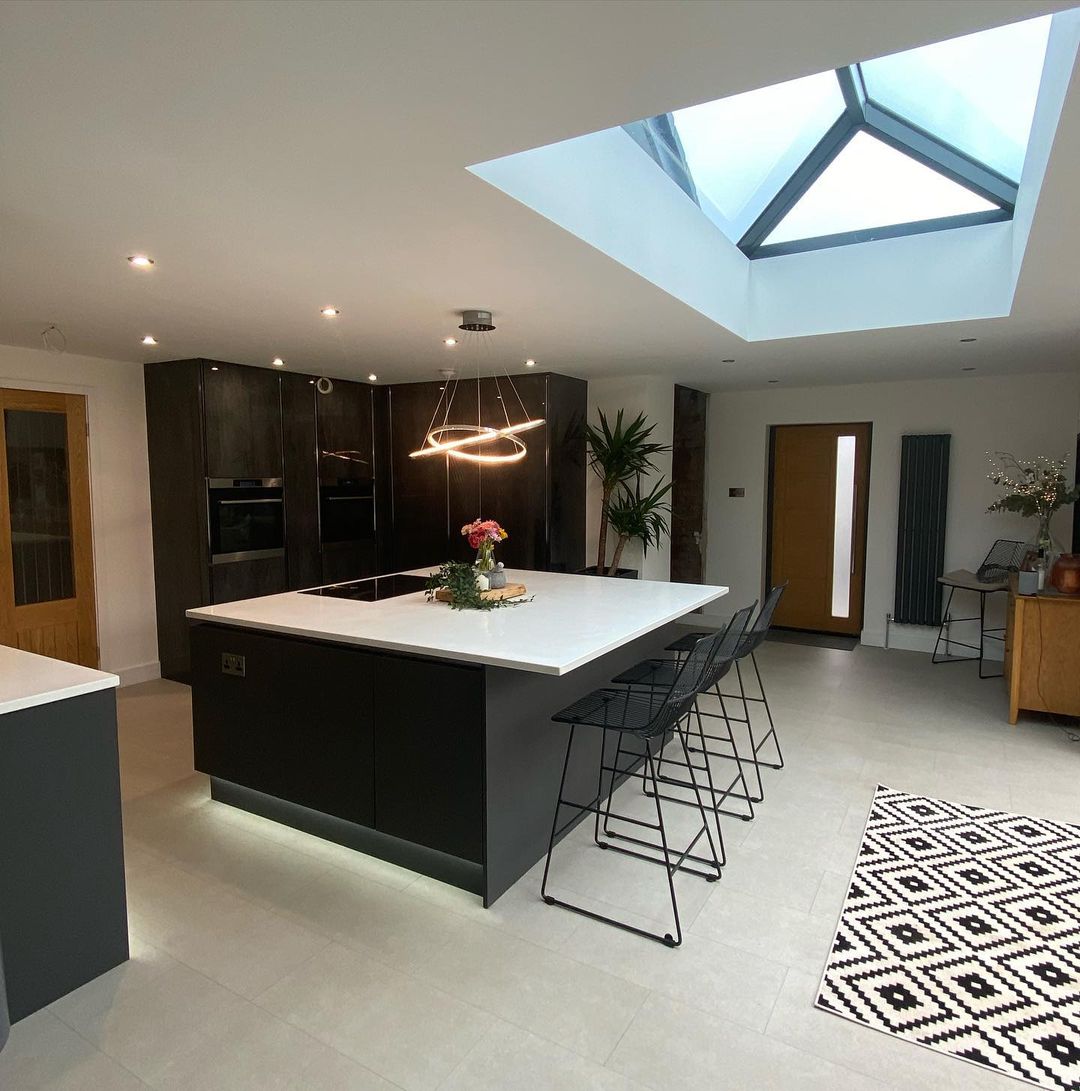
Tile effect vinyl flooring in the kitchen from Insta account @renovating_192. Floor by Quickstep Floors.
How Much Does It Cost To Lay Vinyl Flooring?
The cost can vary significantly depending on the style of vinyl flooring.
The cheapest to lay is a sheet vinyl or loose lay as they are far more straightforward to fit.
The most expensive would be a glued down tile as you will need to pay for a subfloor. If you are looking for a particular pattern such as herringbone then this will cost even more to install as it's far more labour intensive. Expect to pay around £20 - £30 / square metre for the more detailed tiles.
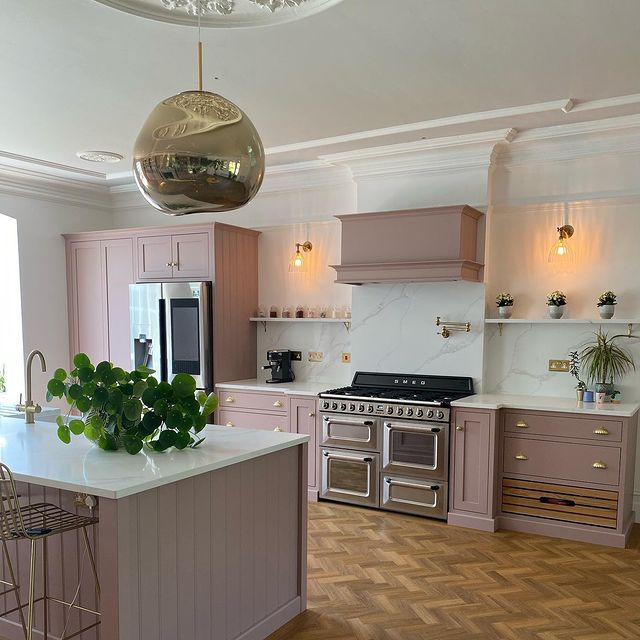
Beautiful kitchen with wood effect flooring from the home of @the_pink_house_project on Insta. Flooring by Amtico.
What Preparation Do You Need To Lay Vinyl Flooring?
The preparation depends on the type of vinyl flooring that you choose.
For the LVT click locking floor, the flooring doesn't necessarily require a subfloor and can be laid over most existing floors such as tiles or floorboards. There is also no need for adhesive which makes it quicker and cheaper to lay. This is similar for a loose lay or a sheet vinyl.
Glued down or self adhesive tiles will require a subfloor to ensure the surface is even to lay the tiles.
The subfloor can often be laid directly on top of the existing floor, although this can be dependent on a number of factors including the condition of the existing floor, the type of subfloor and if you are able to add extra height.
By laying a subfloor, the new surface will be smooth and level, which means the flooring can be fitted well and there are no gaps. The subfloor will also ensure the adhesive of the vinyl floor will be able to bond properly, which it may not be able to do with the existing floor.

Vinyl flooring tiles from Insta account @vintique_homeware. Flooring by Amtico.
Can I Have Underfloor Heating and Vinyl Flooring?
Underfloor heating typically works well with vinyl flooring.
It's worth checking the maximum temperature that your vinyl flooring can cope with; most soft floors have a maximum underfloor heating temperature of 27 degrees. Do check the underfloor heating system you are installing doesn't have a higher heat output requirement.
Do You Require Underlay With Vinyl Flooring?
Most vinyl flooring has a base layer which means you normally don't require an underlay.
If you are gluing either the sheet vinyl or a glue down LVT, then you won't require underlay with the flooring and it needs to be fitted to a plywood subfloor.
However the LVT click systems are sometimes laid over underlay, which can help with noise reduction and make the flooring feel softer.
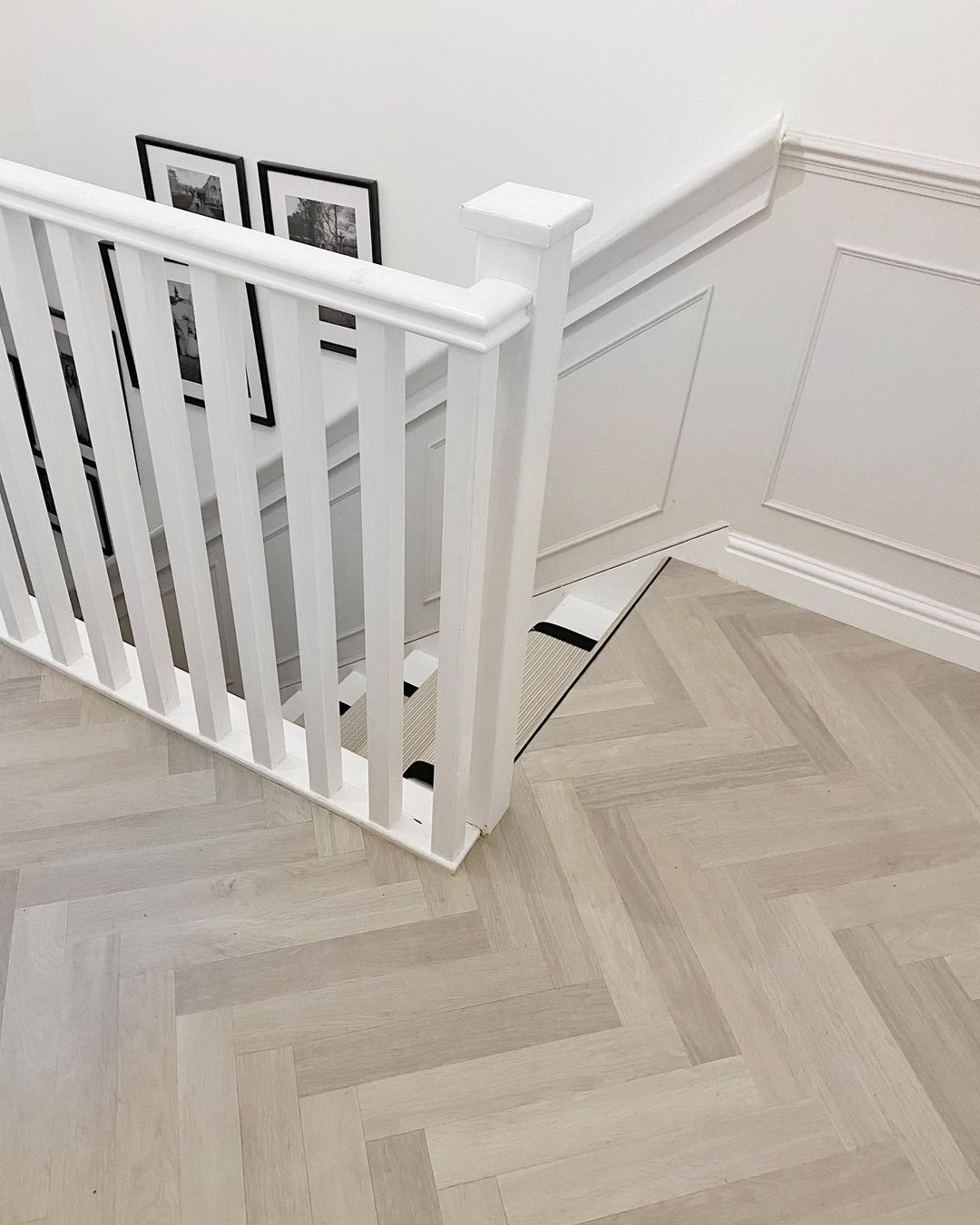
Herringbone style LVT in the hallway from the home of Insta account @luckyplot13. Flooring by Karndean.
What Should I Look Out For When Choosing Good Quality Vinyl Flooring?
Cheap vinyl flooring could be prone to tearing, particularly from shoes and pets. It will also look less authentic than a higher end LVT, so it's often worth paying slightly more to achieve the look you want.
If you want an authentic looking wood replica then it's good to do your research to find a realistic vinyl floor. Additionally, some come with a textured finish which adds more to the authenticity and helps create a non-slip surface.
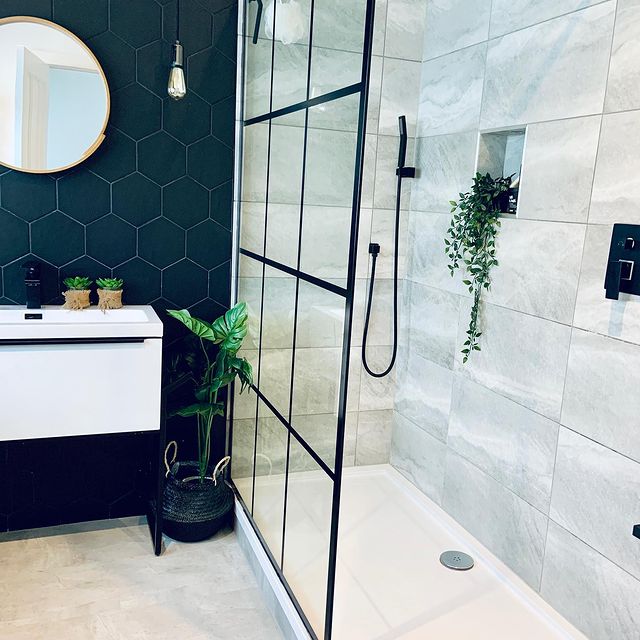
Tile effect vinyl flooring in this bathroom from Insta account @bungalow_bricks
How Do You Look After and Maintain Vinyl Flooring?
Vinyl flooring is fairly low in maintenance. To ensure that your vinyl flooring is laid correctly and will last for years to come, it's best hiring a professional fitter to install it. Many of the manufacturers will only guarantee their products if they have been installed by an approved fitter.
The flooring is easy to look after with a simple weekly mop to keep it clean and free of stains. An annual protective coating also keeps it looking the best and helps prevent stains and marks.
One of the biggest advantages of tile LVT is, if you damage vinyl flooring, it can be lifted and replaced without too much disruption. Although wood and engineered wood can be sanded down, it's not a straightforward job and can only be done a few times over the product's life.
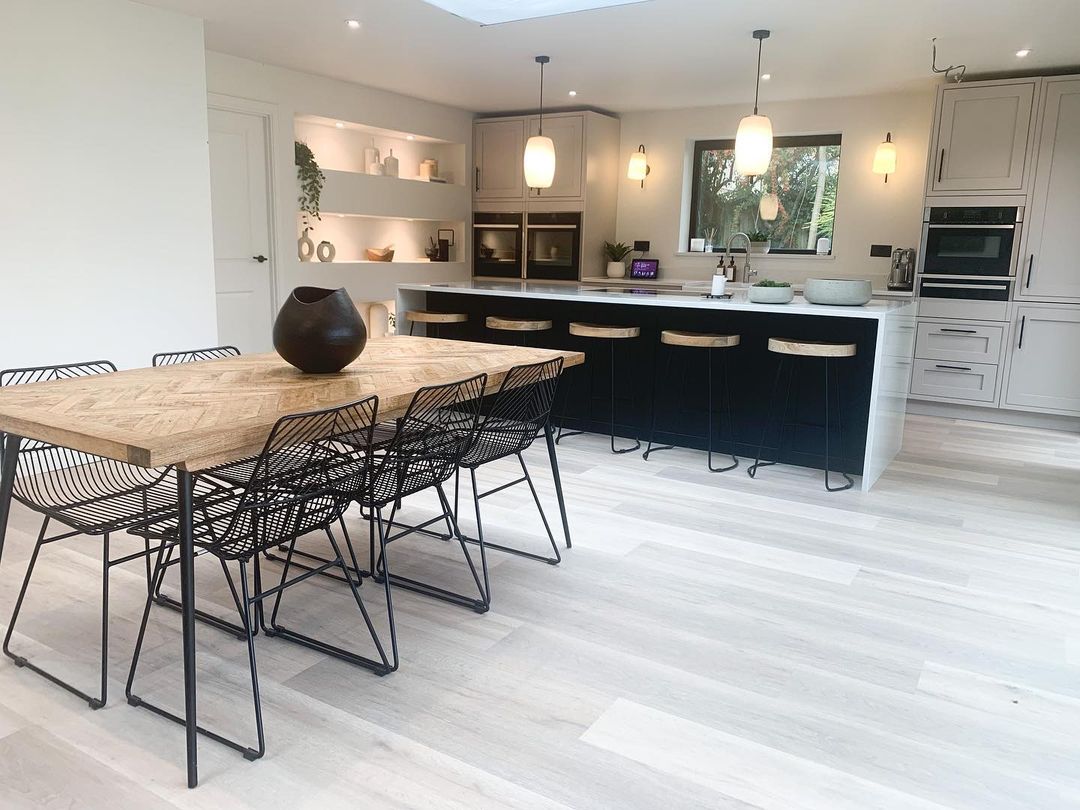
Stunning wood effect vinyl floor in the home of Insta account @ourgreenbankhome. Flooring from Karndean.
Where Can I Buy Vinyl Flooring?
The popular brand names in the UK are Amtico and Karndean. Amtico is manufactured in the UK and is known for being a great replica of wood and stone, however it's a slightly more expensive product than Karndean.
If you are looking for a bargain, it's always worth having a look on eBay, where you can often pick up high quality flooring that is left over from big jobs.
Karndean is owned by Polyflor which also has their own range of LVT flooring. The Polyflor range is cheaper, although more limited in designs.
Other popular choices include Parador, Quickstep, Harvey Maria and B&Q.
If you are thinking about a renovation in the near future and need some help with where to start with your project, try our 1:1 impartial online session.
Online Session
Published: July 13, 2022



